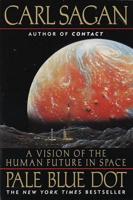Publisher's Synopsis
Recent advances in instrument design have enabled scientists to observe and measure properties of the atmosphere at finer temporal and spatial scales. Studies have shown that it can be necessary to understand the interactions and processes of the atmosphere on a single particle basis to make models that reliably simulate nature on the larger spatial and temporal scales that concern us in our daily lives and in the political arena. Unfortunately, many of the standard techniques used for continuous or large-scale phenomena are not applicable when the discrete nature of atmospheric particulates matter. This book reviews and develops methods to statistically describe atmospheric particulates (aerosols, cloud droplets, and precipitation) in environments where their discreteness cannot be neglected. The study may help guide those who attempt to parameterize micro-physical processes in a bias-free way so that extrapolation to macroscopic phenomena is less flawed. This study could also be of use to anyone who is trying to gain a quantitative grasp on how the details of microphysical spatial distributions can matter in everyday phenomena like rain or sunlight transmission through clouds.









